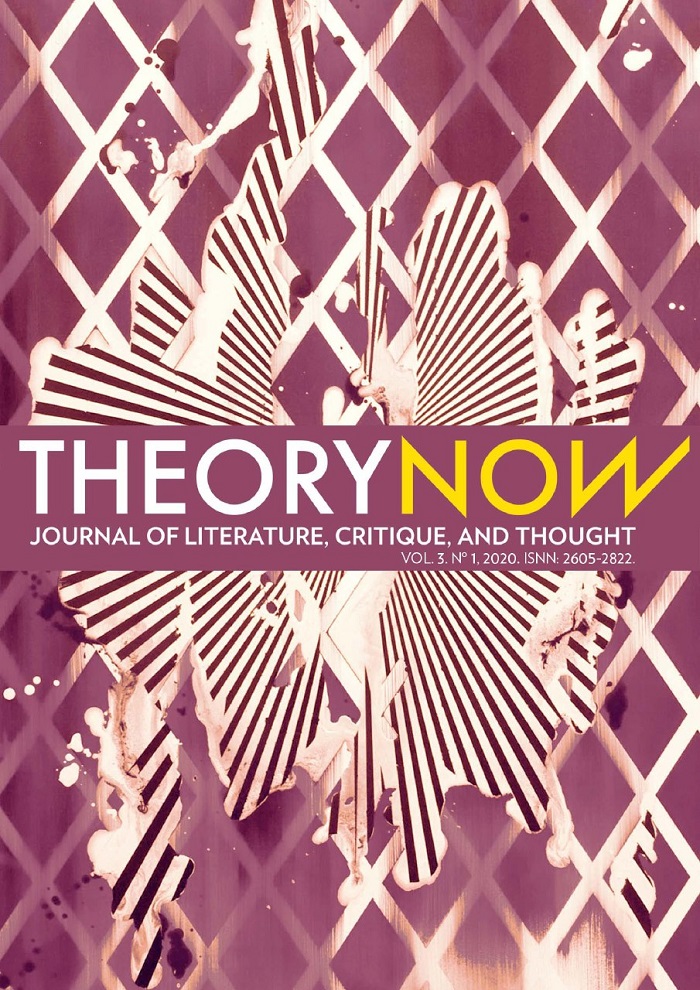The edges of representation
DOI:
https://doi.org/10.30827/tnj.v3i1.11368Keywords:
Rancière, edges, images, emancipation, representation, art, politicsAbstract
This article is based on the following hypothesis: in Jacques Rancière’s reflectionsabout emancipation, the modes of appearance of social movements do not have anaggregated sociological nature; instead, what is at stake is the creation of their scene ofappearance. For Rancière, the relations between art and politics are not founded on theircontents but on the modes of their realisation. But they are not only configured throughdiscursive forms; images also play a crucial role in the creation of sensitive worlds vis-à-visthe presentation of the dominant discourse. Based on this hypothesis, this article arguesthat Rancière’s philosophy contains a ‘methodology of edges’ that is useful for exploringthe ambivalent capacity of images in geopolitics to produce territories, to trace lines of distributionand visibility. From this perspective, we will examine the dual meaning acquired bythe notion of border as a space in which a boundary is established but also a place whereinterruption occurs; rather than simply a line that separates, it forms interstices, a place offlows and desires. And therein lies its fragility.
Downloads
References
Déotte, Jean-Louis. ¿Qué es un aparato estético? Benjamin, Lyotard, Rancière. Santiago,Ediciones Metales Pesados, 2012.
Méchoulan, Éric. “Jacques Rancière et le médium pensif”. Politiques de l’image. Questionspour Jacques Rancière. Adnen Jdey (ed.), Bruxelles, Éditions La Lettre volée,2013, pp. 55-74.
Rancière, Jacques. Aux Bords du politique. Paris, Osiris, 1990.
____.El maestro ignorante. Buenos Aires, Nueva Visión, 1996.
____.“Le ressentiment anti-esthétique”. Magazine littéraire, no. 414, 2002, pp. 18-21.
____.El desacuerdo. Política y filosofía. Barcelona, Laertes, 2003.
____.El inconsciente estético. Buenos Aires, del Estante, 2005.
____.La philosophie déplacée. Autour de Jacques Rancière, Actes du colloque de Cerisy. Paris, Horlieu, 2006a.
____.“L’usage des distinctions”. Failles, no. 2, 2006b, pp. 6-20.
____.Breves viajes al país del pueblo. Buenos Aires, Nueva Visión, 2007a.
____.En los bordes de lo político. Buenos Aires, La Cebra, 2007b.
____.El reparto de lo sensible. Santiago de Chile, LOM, 2009a.
____.La palabra muda. Ensayo sobre las contradicciones de la literatura. Buenos Aires,Eterna Cadencia, 2009b.
____.La noche de los proletarios. Archivos del sueño obrero. Buenos Aires, Tinta Limón, 2010.
Downloads
Published
How to Cite
Issue
Section
License
Theory Now. Journal of Literature, Critique, and Thought is an immediate open-access publication which is available at no cost for readers and authors alike. Authors are not charged any kind of fee for the editorial processing of their articles. Reading, downloading, copying, distributing, printing, searching, linking or reusing all published articles for non-commercial uses is allowed on the condition of citing the author, the journal and the editing body. All intellectual material published in this journal is protected under a Creative Commons Attribution-NonCommercial 3.0 Spain license.
Dissemination of the articles in social (Facebook, Twitter, Linkedin, etc.) and scientific networks (ResearchGate, Academia.edu, etc.), public repositories at universities and other institutions, blogs, personal or institutional websites, Google Scholar, ORCID, ResearchID, ScopusID, etc. is strongly encouraged. In all cases, the intellectual property of the articles and any possible monetary profits derived from them belong exclusively to the authors.













